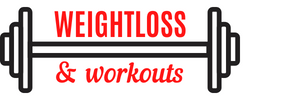Achieve Success: How To Create A Weight Loss Journal
Creating a weight loss journal involves more than just tracking what you eat; it requires a strategic approach to monitor habits and progress effectively.
Structuring a comprehensive journal can have a significant impact on your journey to a healthier lifestyle. Setting specific goals, planning meals, monitoring mood, and celebrating milestones are key components that can transform your weight loss experience into a motivating process.
Continue Reading to Understand These Key Points:
- Set clear and achievable weight loss goals for guidance and motivation.
- Break goals into smaller steps to track progress effectively.
- Celebrate milestones to stay motivated on the weight loss journey.
- Use pantry essentials for balanced meal planning and healthier choices.
Setting Weight Loss Goals
To successfully start my weight loss journey, I need to set clear and achievable goals to guide me towards my desired outcome. Breaking my main goal into smaller steps helps me track progress effectively.
Establishing monthly, weekly, or daily goals allows me to celebrate small victories along the way, keeping me motivated.
In my weight loss journal, I have a dedicated section for goal setting, using a bullet journal or regular format to track my goals. Integrating these goals with other sections ensures a holistic approach to my health journey.
Setting achievable steps helps me stay focused and motivated while celebrating each milestone, no matter how small, and keeps me inspired towards reaching my ultimate weight loss goal. By breaking down my weight loss journey into manageable steps, I can maintain a clear understanding of my progress and make adjustments as needed. Additionally, staying mindful of my accomplishments helps me appreciate the effort and hard work I put in, which serves as a source of motivation to keep pushing forward. As I continue on my path toward my ultimate weight loss goal, I am considering how to apply for a weight loss show to further hold myself accountable and potentially receive additional support and guidance.
Meal Planning Strategies
When it comes to meal planning strategies, balancing meal choices, mastering portion control tips, and stocking up on healthy pantry essentials are key.
By incorporating a variety of nutritious foods in appropriate portions, I can create satisfying meals that support my weight loss goals.
Ensuring my pantry is stocked with wholesome ingredients makes it easier to stick to my meal plan and make healthier choices.
Balanced Meal Choices
When planning balanced meals for weight loss, incorporating a variety of colorful fruits and vegetables is essential for supplying vital nutrients and promoting satiety.
To ensure a well-rounded meal plan, consider these strategies:
- Opt for lean protein sources like chicken, fish, tofu, or legumes to support muscle maintenance and keep you feeling full.
- Include whole grains such as quinoa, brown rice, or whole wheat bread for sustained energy levels and a good source of fiber.
- Limit processed foods high in added sugars, unhealthy fats, and sodium to maintain a nutritious diet conducive to weight loss goals.
Portion Control Tips
Transitioning from balanced meal choices to portion control tips involves using smaller plates to visually signal fullness and support mindful eating habits. Measuring snacks and meals in advance helps avoid overeating by being mindful of portion sizes.
Using measuring cups or a food scale assists in proper portion control. Opting for single servings or pre-portioned snacks can prevent mindless eating episodes.
Embracing the ‘plate method’ – half the plate vegetables, a quarter protein, and a quarter whole grains – aids in balancing food intake.
These practices can be integrated into your weight loss journaling journey to cultivate healthy habits, enhance eating habits, track water consumption, structure meal plans, and complement your exercise regimen effectively.
Healthy Pantry Essentials
Stocking your pantry with essential items like whole grains, lean proteins, healthy fats, and a variety of fruits and vegetables is crucial for effective meal planning strategies that support your overall health and weight loss goals. When planning your meals, consider the following pantry essentials:
- Whole grains: Quinoa, oats, and brown rice provide fiber and sustained energy.
- Lean proteins: Chicken, fish, tofu, and legumes aid in muscle repair and satiety.
- Healthy fats: Avocados, nuts, seeds, and olive oil are crucial for heart health and nutrient absorption.
Daily Meal Logging
Keeping a detailed record of all food and drink consumed throughout the day is crucial for daily meal logging. By diligently logging meals, one can track caloric intake, nutritional content, and portion sizes, aiding in understanding eating habits and facilitating weight loss.
This practice helps identify patterns in food consumption, allowing adjustments to meet dietary goals. Meal logging is instrumental in recognizing missing nutrients in the diet, such as protein, fiber, vitamins, and minerals, essential for overall health and weight management.
Healthcare professionals often recommend meal logging as a valuable tool for monitoring dietary intake and promoting healthy eating habits. Tracking daily food intake through meal logging is an effective method for staying accountable and making informed food choices, contributing to achieving weight loss goals.
Hydration Tracking Tips
To maintain optimal health and support weight loss efforts, tracking daily hydration is essential, complementing the practice of logging meals. Ensuring adequate water intake is crucial for overall well-being and can significantly impact weight loss progress.
Here are some hydration tracking tips to help you stay on top of your fluid intake:
- Set Daily Goals: Establish specific water intake goals based on your individual needs and lifestyle. Aim to reach the recommended daily fluid intake of 15.5 cups for men and 11.5 cups for women.
- Choose a Tracking Method: Decide whether to integrate your water intake tracking with your meal log or keep it separate. Find a method that works best for you and is easy to maintain consistently.
- Adjust as Needed: Be flexible with your tracking approach and adjust it according to your preferences and feedback from your body. Customizing your water tracking method can help you stay motivated and accountable.
Exercise Routine Planning
Planning your exercise routine effectively involves scheduling specific workouts that encompass cardio and strength training sessions, detailing exercise type, duration, intensity, and rest periods.
To ensure a well-rounded workout plan, consider the following table with some workout options and key elements to incorporate:
| Workout Type | Duration | Intensity | Rest Periods |
|---|---|---|---|
| Cardio (running, cycling) | 30-60 mins | Moderate to High | 1-2 mins between sets |
| Strength Training (weightlifting) | 45-60 mins | High | 2-3 mins between sets |
| Yoga | 45-60 mins | Low to Moderate | Varies based on poses |
| Dance Classes | 60 mins | Moderate to High | Breaks between routines |
Workout Progress Tracking
I’ve found that keeping a detailed exercise log is crucial for tracking progress effectively. By setting specific workout goals, I can measure my achievements and make adjustments as needed.
Organizing my exercise routine in a structured manner helps me stay motivated and focused on reaching my weight loss targets.
Can Keeping a Weight Loss Journal Help in Sticking to Weight Loss Goals?
Keeping a weight loss journal can be incredibly helpful in sticking to weight loss plan. By tracking your progress, recording your meals and exercise, and reflecting on your challenges and successes, a journal can provide accountability and motivation to help you stay on track with your weight loss goals.
Exercise Log Organization
Organize your exercise log meticulously by detailing workout types, duration, intensity levels, and specific exercises performed to track your progress effectively.
Incorporate a mix of cardio, strength training, and flexibility exercises to engage different muscle groups. Record workout session lengths to meet recommended exercise guidelines.
Note workout intensity using tools like heart rate monitors or perceived exertion scales.
Setting Workout Goals
Transitioning from organizing your exercise log to setting workout goals involves specifying clear objectives such as increasing workout frequency, duration, or intensity to effectively track progress in your weight loss journey.
Utilize a workout log to document exercises, sets, reps, and weights lifted during each session. By monitoring improvements in strength, endurance, and overall fitness levels over time, you can stay motivated and focused on your goals.
Incorporate a variety of workouts including cardio, strength training, and flexibility exercises to ensure a well-rounded routine. It’s crucial to track workout consistency and be willing to adjust goals as needed to maintain continuous progress in your weight loss journey.
Emotional State Monitoring
Regularly monitoring your emotional state is crucial for identifying and addressing triggers for unhealthy eating habits during your weight loss journey. Understanding how your mood affects your eating behavior is key to successful weight loss.
These key points are good to consider when it comes to emotional state monitoring:
- Emotional Eating: Tracking your emotions helps distinguish between genuine hunger and emotional cravings, preventing impulsive eating.
- Mood Tracking: Monitoring mood changes provides insights into emotional connections to weight loss, enabling informed decisions about eating habits.
- Preventing Emotional Eating Patterns: Increasing awareness of your emotional state helps recognize patterns leading to emotional eating and take proactive steps to address them.
Maintaining a mood journal supports mental well-being throughout the weight loss journey and empowers healthier choices by understanding the relationship between emotions and eating behaviors.
Progress Review and Adjustments
To effectively monitor and improve progress in your weight loss journey, regularly review and adjust your diet and exercise plans based on data. Analyze trends in weight loss, mood, and food intake from journal entries to identify what’s working and where changes are needed.
Look for patterns or fluctuations indicating necessary adjustments and optimize results by making modifications. Continuously refine goals and strategies using journal feedback to maintain progress long term.
Tailor your weight loss approach with information from your journal to keep moving forward. Stay attentive to journal entries and be willing to adapt plans for sustained success in your weight loss journey.
Can Weight Loss Journaling Help with Creating Creative Photo Shoot Ideas?
Weight loss photo shoot ideas can definitely be sparked through journaling. Keeping track of your weight loss journey can inspire creativity and confidence, leading to innovative and unique photo shoot concepts. By documenting your progress and celebrating your success, you may find new inspiration for stunning photo shoots.
Celebrating Milestones
As we progress in our weight loss journey, it’s vital to celebrate milestones like reaching goals and achieving small victories. Celebrating these achievements can provide motivation and encouragement to continue on the path towards a healthier lifestyle.
Here are some practical ways to celebrate milestones effectively:
- Reward Yourself: Treat yourself to non-food rewards such as a new workout outfit or a relaxing spa day for hitting weight loss goals. These rewards can help reinforce positive behaviors and keep you motivated to reach the next milestone.
- Acknowledge Small Victories: Celebrate small wins like resisting unhealthy cravings or sticking to your meal plan for a week. Recognizing these achievements can boost your confidence and show that your efforts are paying off.
- Share Your Success: Share your milestones with a supportive friend or online community. Receiving encouragement and positive reinforcement from others can further motivate you to stay on track and continue making progress.
Sustaining Long-Term Success
To sustain long-term success in your weight loss journey, incorporate a mix of short-term and long-term goals in your weight loss journal. Setting achievable short-term goals boosts motivation, while long-term goals keep you focused.
Track progress using tools like before-and-after photos, body measurements, and weight logs. Reflect regularly, learn from setbacks, celebrate achievements, and stay committed.
Practice self-care through stress management, healthy coping strategies, and prioritizing well-being. Seek support from healthcare professionals, online communities, or accountability partners to stay on track with weight loss maintenance.
Final Thoughts
Reflecting on my weight loss journal journey, I see the progress made through highs, lows, victories, and setbacks.
The pages are filled with meal plans, workout routines, and emotional reflections, mapping out my transformation beyond just numbers on the scale.
It’s about the growth and resilience gained along the way.
Cheers to the ongoing journey towards a healthier, happier me.







Love the meal planning strategies! Makes healthy eating seem doable even with my crazy schedule.
Has anyone tried tracking hydration this way? Does it make a big difference in how you feel?
I’ve tried using a meal log before, but always fell off after a week or so. It’s encouraging to see it recommended here, though. Maybe I’ll give it another try with a different mindset.
Definitely give it another shot, Jenny! It’s all about finding a rhythm that works for you.
Exercise routine planning? Hope it plans around my couch naps haha